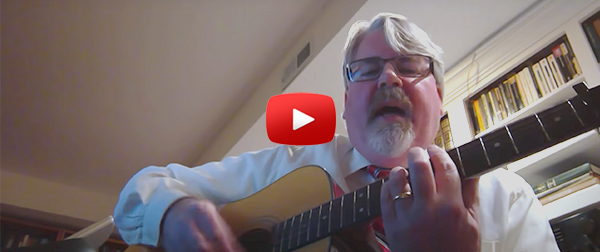Bringing TOPkit Digest to You
|
|
Contents of this Digest:
- Video Tip: I Will Survive
- Announcements: TOPkit Workshop 2021 | IELOL
- Top Tips: Supporting Teaching Faculty in Times of Crisis
- From the Community: Supporting Faculty That Shift to Online Instruction
- Ask ADDIE
- Top Community Topics
|
|

|
|
To the tune of Gloria Gaynor's 1978 hit "I Will Survive", Michael Bruening reminds teachers suddenly going online due to the COVID-19 pandemic that they will survive.
|
|
MUST-READ ANNOUNCEMENTS
- Hold the date for the interactive, engaging TOPkit Workshop 2021 to occur on Thursday, March 25 and Friday, March 26.
- The 2020 Institute for Emerging Leadership in Online Learning (IELOL) now is a fully virtual program. Apply and send your letter of recommendation by the deadline of June 1.
|
|
|
TOP TIPS
|
Supporting Teaching Faculty in Times of Crisis
|
|
 | |
The entertaining music video by Michael Bruening highlights possible perspectives of current faculty who have never taught online. While the video is hilarious, it highlights the need for supporting teaching faculty who are engaged in teaching remotely at this time. The reality is while many faculty have experience teaching online, others do not. Therefore, there will be an urgent need for instructional designers and curriculum designers to provide the required scaffolding to ensure faculty succeed in teaching remotely. Here are six strategies that can be implemented to support the faculty who are teaching online in a time of crisis.
|
|
|
|
|
#1 - Guide Faculty to Reflect on the Moment - Long term, chronic crises require measured solutions; this is a marathon, not a sprint. This forced slowdown doesn't have to be torture … stay in the moment and be thankful and appreciative of the positive things — the things that are going right. It is essential to guide the faculty to reflect on the moment and put things into perspective.
|
|
#2 - Reduce Anxiety - To reduce anxiety and keep faculty focused on the task of teaching, instructional designers and curriculum developers should consistently communicate with faculty, hold regular consultations, and respond quickly to faculty emails. These strategies ensure that faculty can count on you and their university community when needed.
|
|
#3 - Listen and Communicate - When faculty are silent, it may mean that they are taking care of business, focusing on survival needs in their own lives or de-stressing, but it may also mean that they are drowning in stress. We must reach out. It is good practice to intermittently reach out to faculty members via check-in, email, announcements, or virtual. | |
#4 - Encourage and Motivate - Help our faculty to plan and prepare to meet survival needs so that they can benefit from ongoing teaching. Faculty are accustomed to planning for projects, papers, etc. — remind them of these strengths and encourage them to prepare in a similar way for this current circumstance. Offer one-on-one or online group sessions to support and motivate faculty to use various forms of new or emerging technologies. #5 - Address Extenuating Circumstance - In crisis situations like the current COVID 19 pandemic, anything is a possibility when it comes to the context of the faculty you engage with. Therefore, flexibility in how you deal with each individual situation is the name of the game. You should never make assumptions or be judgmental in your approach of offering guidance or support to faculty. Each faculty situation will be unique.
#6 - Provide Appropriate Resources - Instructional designers and curriculum developers have an arsenal of resources that can be deployed to assist faculty. However, it is important that these resources are not dumped onto faculty but are deployed according to faculty’s needs. Dr. Rohan Jowallah, Senior Instructional Designer, University of Central Florida; Dr. Monique Levermore, Faculty, University of Central Florida; and Dr. Luke Bennett, Lecturer, Clemson University
|
FROM THE COMMUNITY
|
Supporting Faculty That Shift to Online Instruction During a Crisis
|
|
|
Responding to a shift in teaching modality, such as face-to-face to online, requires immediate action. This action must consider faculty development needs and students' needs. The resources provided below will offer an evaluative tool to assess your organizational needs, strategies for engaging in web-based teaching, and current trends regarding how some institutions are adjusting to facilitate the continuity of teaching and learning.
Active Engagement In Live Web-based Teaching Sessions - There are significant benefits for hosting online synchronous sessions. Some of these benefits include enhanced student interaction, structured learning engagement for students, increased learner motivation, and improved rapport between teachers and students.
Adjusting to Remote Instruction at Community College - The online news source, Inside Higher Ed, asked faculty members at community and technical colleges how the shift to remote learning is going at institutions that often have less federal and state funding support while serving some of higher education's most vulnerable students.
Faculty Development Decision Guide - The Faculty Development Decision Guide (FDDG) is a comprehensive interactive tool designed to allow institutions to evaluate their online faculty development needs, create a plan of action for their own online faculty development program, and have access to resources that will support staff development.
Online Student Confession: "I Fell Asleep Online." - James then looked at his wall clock and realized that he had fallen asleep for over an hour. James's situation is not isolated. Possible strategies are shared to ensure James is actively engaged in his online class.
|
|
|
Ask ADDIE
|
The Credibility Highway
 | |
Dear ADDIE,
I am new to the instructional design profession. I got this job–which I love–because I taught online, used flipped classroom strategies, and redesigned my course several times—not because I have any training or education in this field. I also did not have the support I needed with my first supervisor (who has since left). I’m looking to re-image myself because my faculty see me and automatically think “Oh you just want me to teach online!” OR “You demanded I take a survey. Who are you to tell ME what to do?” What do you suggest? I really want to help my faculty move toward the 21st Century in higher education.
Signed,
Reformation in Progress
|
|
|
|
Content Coordinator and Contributor
Rohan Jowallah, Ed.D., Senior Instructional Designer, University of Central Florida
Editor
Bren Bedford, MNM, Web Project Analyst, Center for Distributed Learning, University of Central Florida
|
|
|




